SI1 Diamonds: The Perfect Balance Of Clarity And Value
Key Takeaways
- It is possible to find eye-clean diamonds with any diamond on the GIA Clarity scale.
- It’s important to talk to a respected jeweler who can help walk you through the clarity scale and what diamond you would be happiest with inside your budget.
- SI1 is seventh on the GIA clarity grade, referring to diamonds which have slight inclusions, determined by two skilled diamond graders.
- The most important thing when purchasing an engagement ring is whether it is eye clean. You can determine this by simply looking at it.
- SI1 may not be the best possible grade, but it is still a good option. Talk to your jeweler in order to help you gain an understanding on whether it is right for you.
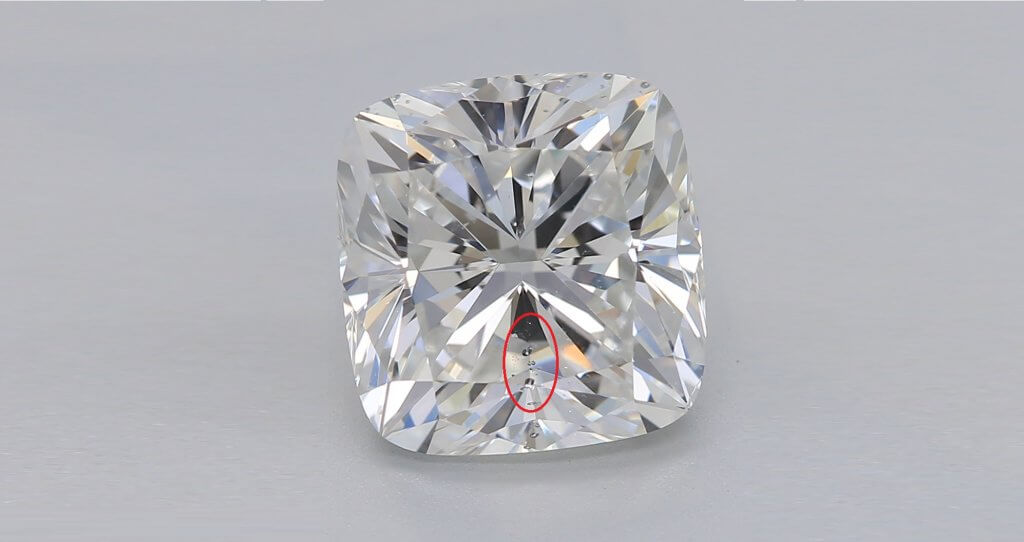
One of the most important things that first-time diamond shoppers to realize is that it is possible to find eye clean diamonds at practically any point on the GIA clarity scale, save for the very lowest grades. In other words, the scope for finding a beautiful and worthwhile investment is much wider than you might have imagined when you first set out on your journey to find a diamond.
But, despite the fact that eye clean diamonds (rather than diamonds that are actually flawless) represent the ideal for the majority of shoppers looking to find a stone for their engagement ring, the highest clarity grades still afford a much, much bigger price tag on the market.
Why? Because so many shoppers go into (and back out) the process believing that beauty is reserved for the very top of the clarity scale – something which can, unfortunately, impact the quality of their ring in the end, since they’ll invest too much into this one area.
Our advice? Go through the process with a reputable local jeweler rather than an impersonal online storefront, and only get started once you’ve filled the gaps in your knowledge about beautiful and eye clean diamonds – starting with the SI2 clarity grade.
- SI1 Clarity: The Basics
- What are SI1 Clarity Diamonds?
- Are SI1 Diamonds Real Diamonds?
- Are SI Diamonds Better than VVS?
- Which is Better VS2 or SI1?
- Is SI1 Better than SI2?
- Are Si1 Diamonds Cloudy?
- Do SI1 Diamond Sparkle?
- SI1 Diamond Price
- What is a SI1 Diamond Worth?
- How Much is a 1 Carat SI1 Diamond?
- Our Summary
SI1 Clarity: The Basics
Clarity is a relatively straightforward subject, and one of the easier aspects to get right when it comes to the Four Cs. Still, it’s not something any shopper can ‘wing’ – at least, not if they want to get the absolute most out of their budget. Understanding the difference between flawless and visually flawless diamonds takes time and research, after all.
What Are SI1 Clarity Diamonds?
SI1 is the seventh of the GIA’s clarity grades, and refers to diamonds that have been found to feature slight inclusions by two skilled diamond graders.
It is the first degree of the SI grade, meaning that it is closely followed by SI2 diamonds, with only marginal differences between the two.
Diamonds in this clarity grade will feature inclusions that are easily noticeable to a skilled grader under 10x magnification. So, while SI1 sits a pretty long way from those top grades of FL and IF diamonds, it’s absolutely not the case that SI1 diamonds will be glaringly obvious to you – or even a skilled jeweler – without magnification. This is what we mean by diamonds that appear visually flawless, or ‘eye clean’.
Are SI1 Diamonds Real Diamonds?
Yes, the SI1 is only used as a clarity grade, not as a way of classifying diamond stimulants or synthetic diamonds.
It’s only natural for first-time diamond shoppers to be weary of any abbreviations or little extras surrounding the word ‘diamond’, but, provided the diamond is accompanied by a valid GIA report (and being sold to you from a reputable, brick-and-mortar jewelry store), then you don’t need to worry about any hidden ‘surprises’ further down the line.
Are SI Diamonds Better than VVS?
No, VVS diamonds sit higher than SI diamond on the GIA’s clarity scale – but that’s not to say you won’t find better deals at the SI grade.
Let’s get one thing straight. Diamond shopping is all about recognizing the fact that some diamonds are objectively ‘better’ than others, but that many of those superior features are invisible to the naked eye – and, therefore, not worth paying for if all you want is to find a beautiful diamond to sit in your engagement ring.
If you’re an avid collector, then the appeal of a near-flawless diamond is a totally different story, but, you’re here reading this, then the odds are that you’re not. Instead, you’re just looking to put your money in the right place – and, for most, the ‘right’ place isn’t the VVS clarity grade.
Are SI1 Diamonds Eye Clean?
Yes, many SI1 diamonds are eye clean – although not all of them will be. Each clarity grade (aside from FL) will include diamonds with significant differences, since every diamond is totally unique.
In case you weren’t aware by now, ‘eye clean’ diamonds represent the ideal choice for the overwhelming majority of diamond shoppers. This is why we’re suggesting that SI is actually the far better choice than VVS in many instances, provided that the SI1 diamond is eye clean.
How do you know if the stone is eye clean? By simply looking at it. You’ll want to have your jeweler by your side for this, just in case but, really, eye cleanliness is just as it sounds – and it’s far more cost-efficient than relying on the highest clarity grades possible.
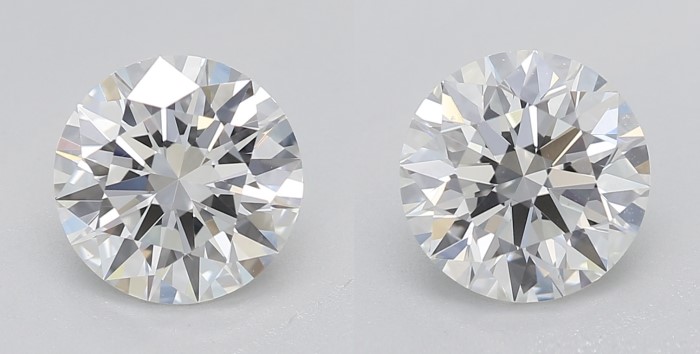
Which is Better VS2 or SI1?
VS2 is one grade higher than SI1, although, in some cases, SI1 can be the better choice.
A diamond with ‘very slight’ inclusions stands a better chance of being eye clean than a diamond with ‘slight’ inclusions – but, as you’re probably thinking right now, the difference is pretty minor.
However, the difference between VS2 and SI1 diamonds grows much more noticeable when you take other factors into account – namely, size and shape.
Why? Because the bigger the diamond, the higher the chances that any minor inclusions will be noticeable. In particularly small diamonds, these inclusions can be masked quite successfully by the small facets – and, of course, the high sparkle – but, in larger diamonds, there are fewer opportunities for the flaws to ‘hide’.
Similarly, the difference in facet shape and size between Round cut diamonds and Emerald cut diamonds, for instance, means that you’re much more likely to be able to spot any minor inclusions in the Emerald cut than the Round cut.
In VS2 diamonds, the inclusions are a little harder for a skilled grader to spot under 10x magnification, offering that extra degree of reassurance to buyers that the diamonds they are browsing will likely be eye clean.
Nevertheless, SI2 diamonds are cheaper and, if you can find an eye clean diamond with a great color grade, cut, and carat weight, then a visually identical diamond with a VS2 clarity grade is no better. If you’re interested in the topic, we’ve got a full article on SI1 vs VS2 for you to explore.
Is SI1 Better Than SI2?
In general, yes, since the SI1 clarity grades offers more scope for finding the perfect diamond, while still offering a much more affordable price tag than those for similar diamonds with VS and VVS clarity grades.
SI2 is the lowest clarity grade where you’re going to find an eye clean diamond, and, at this point, they’re certainly in the minority. Less than a third of all SI2 diamonds on the market are thought to be eye clean, which means that you might have to kiss a few frogs before you finally find one that’s beautiful enough for your engagement ring.
As we mentioned above, size and shape play a major role in deciding whether or not a diamond of a certain clarity grade is eye clean. Another factor that can cause some SI2 diamonds to appear eye clean and some SI1 diamonds to appear visibly included is the placement of those inclusions.
If an SI2 diamond has inclusions scattered toward the very edges, and an SI1 diamond features slightly fewer inclusions that are clustered in the very center (table) of the diamond, then the first diamond may appear ‘cleaner’, despite having a lower clarity grade.
Even so, you may be limiting yourself too much when it comes to the size and shape of diamond you’re looking for. Just as VS2 can be better than SI1 for certain cuts (like the step cut) and larger diamonds, the same argument holds true when you’re on the fence between SI1 and SI2.
Our advice? Budget a little extra for a VS2/SI1 diamonds. Don’t close yourself off to SI2 entirely, but don’t hold your breath, either.
Are SI1 Diamonds Cloudy?
Not unless they’re suffering from strong fluorescence. The SI1 clarity grade is unlikely to apply to a diamond with inclusions significant enough to cause cloudiness.
A high degree of diamond fluorescence can cause an otherwise eye clean stone to appear cloudy, and this won’t have impacted the clarity grade printed within the GIA report at all. Fluorescence is addressed within the report, but under its own category. So, even a flawless diamond could suffer from fluorescence.
Otherwise, strong cloud inclusions – strong enough to dull the sparkle of a diamond and make it appear cloudy – will in all likelihood bring the stone’s clarity grade way down to I1 or I2, rather than a grade as high (relatively speaking) as SI1.
Do SI1 Diamonds Sparkle?
Yes, so long as they’re cut to a high standard.
In the same GIA Report that features your diamond’s clarity grade (and diamond plot, which maps out any inclusions present within the stone), you’ll be given a cut grade. For this, you want to stick to the two highest grades: ‘Excellent’ and ‘Very Good’.
If not, you run the risk of losing sparkle – much, much more than you risk losing any sparkle on an SI1 diamond.
Eye cleanliness is important in its own right, because visibly included diamonds naturally look far worse than visually flawless diamonds (no matter how flawed they are under magnification) – not because it boosts the diamond’s ability to sparkle.
Yes, a cloudy or very included diamond won’t sparkle as much, but you’re not running that risk when it comes to SI1 diamonds. But, to set your mind at rest, this is why we would never recommend our readers use online stores – however strong their reputations. You simply can’t feel 100% confident in your own decision before you have seen and held the diamond for yourself – and, of course, experienced its unique sparkle for yourself, too.
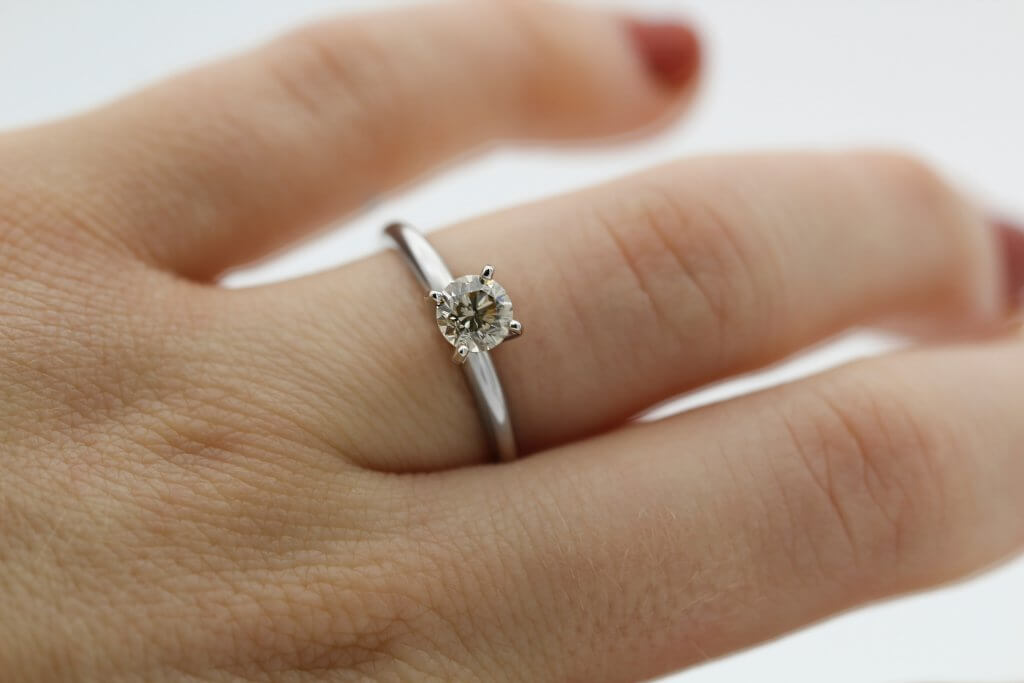
SI1 Diamond Price
It’s no secret that the easiest thing to do would be to aim for a clarity grade that isn’t going to include any diamonds that are not considered eye clean, like VVS1 or VVS2. The trouble is, these clarity grades cost thousands of dollars more, simply because of the prestige attached to them – and, for most of us, those thousands of dollars make a pretty hefty difference.
What is a SI1 Diamond Worth?
Typically upwards of $2,000, although the cost of a one carat SI1 diamond (with Excellent cut and good color) will be higher.
When it comes to diamonds, cost does not increase gradually alongside carat weight. For starters, there are plenty of other factors (clarity included) that influence the cost of a diamond – but, regardless, larger diamonds are far, far more popular on the market than smaller diamonds below 1 carat in weight.
For this reason, an SI1-H 0.5 carat diamond won’t just be sold at 50% of what an SI1-H 1 carat diamond costs since it’s far more likely someone is going to want to use a 1 carat (or higher) diamond in the center of their engagement ring than a 0.5 carat stone.
So, a diamond’s worth depends on a lot more than its clarity grade. Two identical diamonds, however, that differ only in clarity grade will be priced differently, and this difference could swing from hundreds to thousands of dollars – even if both are eye clean.
How Much is a 1 Carat SI1 Diamond?
Expect to pay around $4,000 – $5,000 for a one carat SI1 diamond with an excellent cut, and a grade in the near-colorless category.
Dropping below this level means that you will likely have to sacrifice something – something that is pretty vital to the beauty and strength of your engagement ring.
Whether that’s eye cleanliness, discoloration, a poor cut (resulting in a dulled sparkle) or even a strong fluorescence, you should be cautious of any price that does not reflect what is printed within the diamond’s GIA report.
It’s no use finding an eye clean diamond if it’s made cloudy by fluorescence, or visible asymmetrical. This is why it’s great for shoppers to be able to find eye clean diamonds lower on the clarity scale, as it leaves more room for them to invest into the rest of the Four Cs, too.
Is an SI1 Diamond Worth the Cost?
In some cases, yes – in others, not so much.
We’ll say it again: the only diamonds that are worth the cost are eye clean diamonds. If you’re looking at an eye clean SI1 diamond that is the right size for your chosen ring setting, then it’s worth the cost – unless, of course, it’s falling short in another area, like cut.
Remember that diamonds still hold onto a lot of value, even at these lower clarity grades – and even if they have some visible inclusions. For that reason, SI1 diamonds aren’t always worth the cost – but they can be.
We said before how clarity is inarguably one of the easier of the Four Cs to get your head around, and that’s absolutely true, but definitely not the case that it’s a total walk in the park. Some of it is objective, but the rest falls on your shoulders to decide. If everything was cut-and-dry, then we would all be buying the same clarity grade.
Our Summary: Is a SI1 Diamond Good?
In many cases, yes, but the worst thing you can do is decide that any SI1 diamond you look at will be up to your standards.
Looking for a modestly sized princess cut diamond? SI1 could be ideal for you, as the facet-structure and lower carat weight could easily disguise any minor inclusions, and this clarity grade could shave a few hundred dollars (or $1,000+) off the price tag. Even larger carat weights could offer strong results, although you may find a little more luck in the VS2 category.
Looking for an Asscher or Emerald cut of the same size? This one’s a little trickier, and could leave you disappointed with the offerings. That ‘hall of mirrors’ effect could easily amplify any minor inclusions that, in another shape, wouldn’t matter in the slightest.
SI1 is a great carat great for many shoppers. It offers an affordable position on the clarity scale that still yields plenty of eye clean diamonds, and allows them to explore better cut quality and higher carat weights at the same time. It’s not, however, held up as the best possible clarity grade for shoppers to aim for.
The solution is pretty simple. First off, you need an open mind and a sharp eye. Secondly, you need to go and see that diamond in person, regardless of how good it looks online. For one thing, pictures online are magnified, meaning any inclusions look worse; alternatively, it’s all too easy for you to fall into the trap of paying for a diamond that has been ‘misrepresented’ online and which, in person, looks a lot worse.
Either way, it’s normal for shoppers to feel a little nervous about calling a diamond ‘eye clean’, so working with the expertise and guidance offered by an experienced jeweler really is the only way for you to feel confident in your choice.
You can browse our full selection of SI1 clarity diamonds here, then find a local jeweler able to walk you through the rest of the way and show that diamond to you in person.
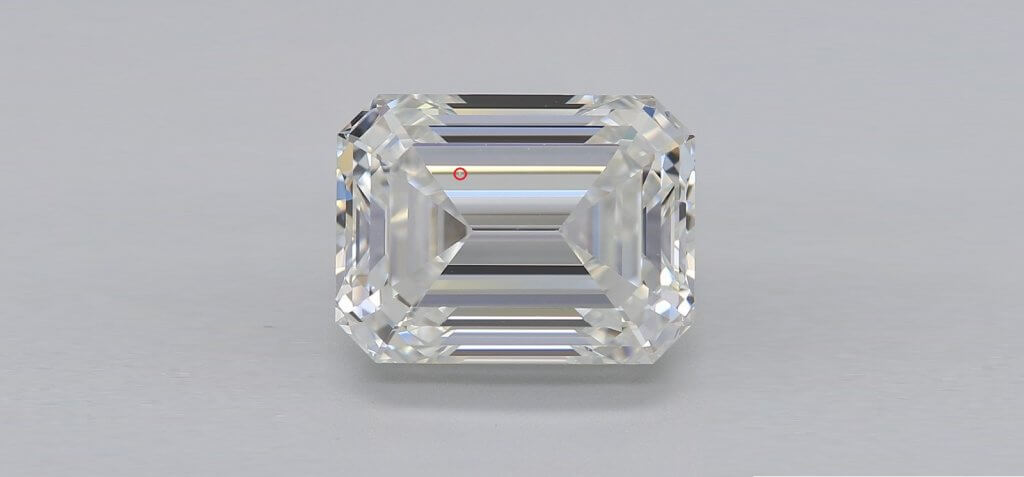
Jul 18, 2022 By Willyou.net
The Ultimate Guide To VVS1 Diamonds
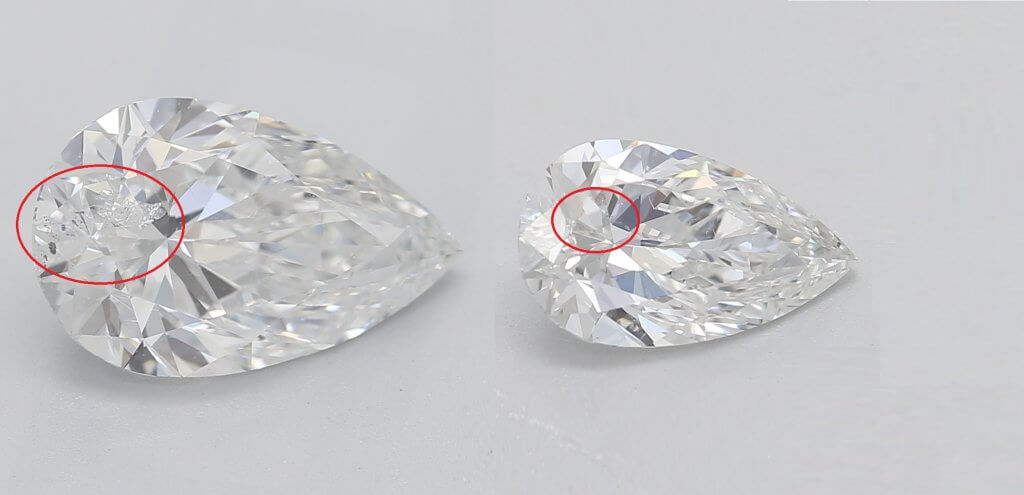
Sep 24, 2021 By Willyou.net
SI2 Clarity Diamonds: What You Should Be Aware Before Making A Purchase








